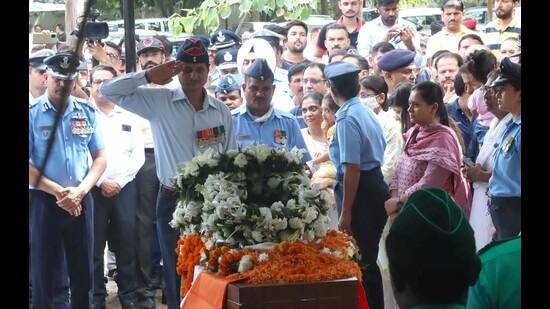What ails the IAF fighter fleet
For a nation that needs its sanctioned strength of fighter aircraft, considering the clear and present security situation that confronts it, urgent steps and bold decisions are required to stem the slide of its inventory
Every time there is a MiG-21 crash or an accident in the Indian Air Force (IAF), there is hype and frenzy, with the media going ballistic for a few days till another news takes over. The last unfortunate accident that occurred on the night of July 28 resulted in the loss of two precious lives in the line of duty. Since then, statistics have flooded the media on the number of MiG-21 aircraft and lives lost to date.

Military aviation is inherently a profession laden with occupational hazards that entail risk to life, irrespective of actual conflict situations. All aviators understand this well. The public perception, however, is contrary to what exists and the circumstances that people operate in, and this needs to be clarified along with suggestions to alter or improve the status quo. In addition, an earnest attempt needs to be made to avoid jingoism and deal with facts that bedevil national security.
The morale of young aircrew is important, and their confidence is affected when fatal accidents occur. While a court of inquiry determines the cause of accidents and remedial measures are instituted by the IAF, given a choice, every fighter pilot would like to fly the latest combat aircraft. Every aircraft that gets airborne is certified airworthy, and the maintenance crew of the IAF has the unenviable task of keeping the MiG-21s flying as they approach the end of their service life.
The perception that the IAF flies poorly maintained aircraft is incorrect. Vintage aircraft fly across the world, mainly for display purposes. But combat aviation for a professional force, faced with growing and imminent threats, should be avoided. The country’s leaders must keep the morale of the young air warriors high to face challenges. So, important decisions and steps to change the status quo must be taken urgently.
When it comes to national security, consensus among political parties must not only be bipartisan, but also the concern for replacement of aging aircraft and systems must be unequivocal. This concern, at the national level, must lead the government to take bold steps and decisions that would not only repose the trust placed in them by the country’s people, but also reverse the slide that the IAF faces today for its dwindling fighter fleet.
Bold steps taken today will take time to bear fruit.
The contract for supply of 83 LCA Tejas Mk 1A was signed by the government in February 2021 with Hindustan Aeronautics Limited (HAL). The prototype of this aircraft just flew last month, the deliveries are due to begin in 2024, with the last aircraft being supplied by 2030.
The Tejas saga is a story of many achievements and firsts for the indigenous aviation industry. However, the production track record leaves much to be desired. The incessant delays and promised timelines that slip do not repose much trust in the only behemoth of aircraft production in the country, HAL.
Trapped in the vicious cycle of “Atmanirbharta” and the lack of indigenous options coupled with the IAF’s dwindling fighter fleet, there is an urgent need to take prompt action, which the present government can well do, given its heft and nationalistic agenda.
For a nation that needs its sanctioned strength of fighter aircraft, considering the clear and present security situation that confronts it, urgent steps and bold decisions are required to stem the slide of its inventory.
Huge investments are required for the procurement and manufacturing of fighter aircraft, and this requires a whole-of-government approach. India’s growing economy should quickly invest in assets that secure our skies.
Decisions taken today would take time to bear fruit, but the impact on the morale of its fighting force and the trust that the country’s people have reposed in the leadership would be immediate.
Anil Golani is additional director general, Centre for Air Power Studies
The views expressed are personal





